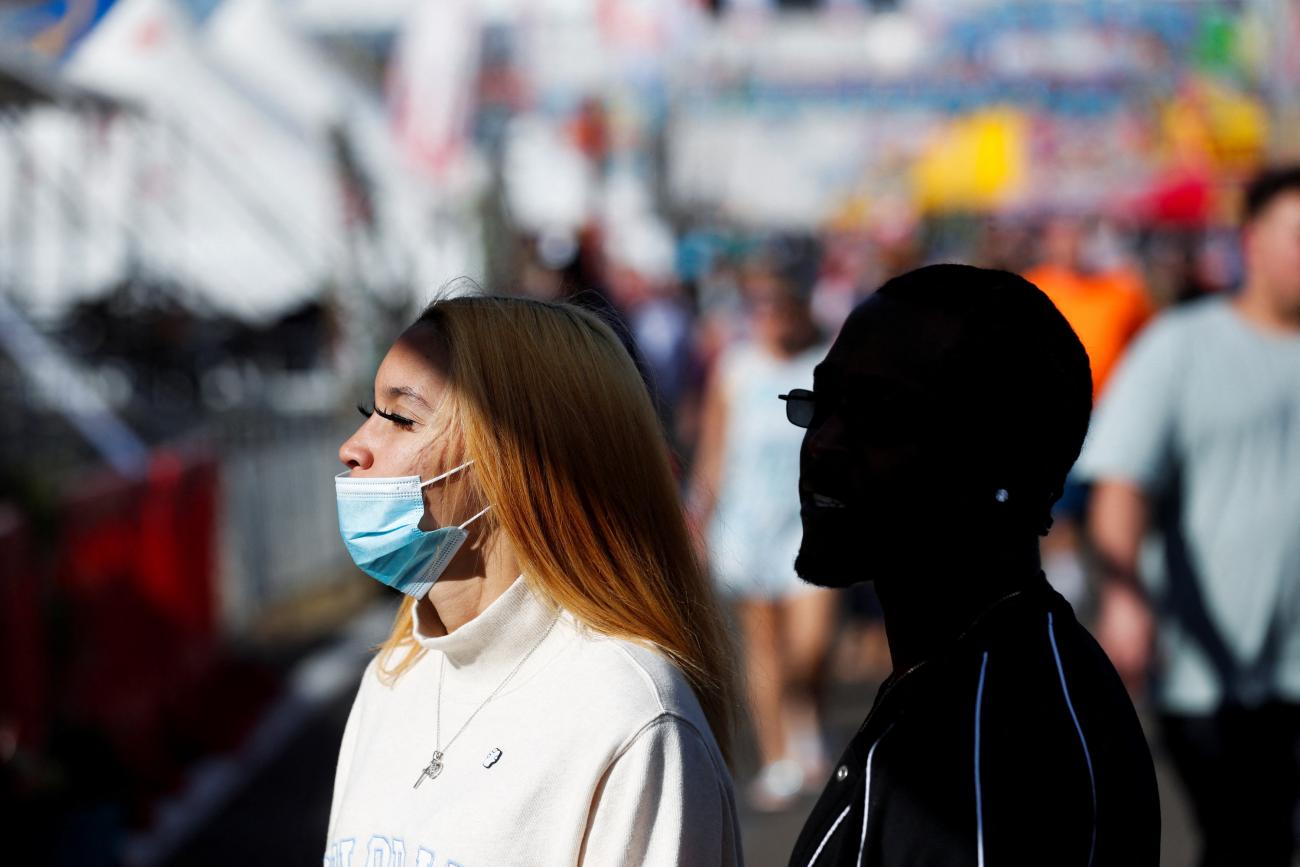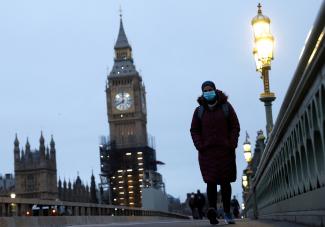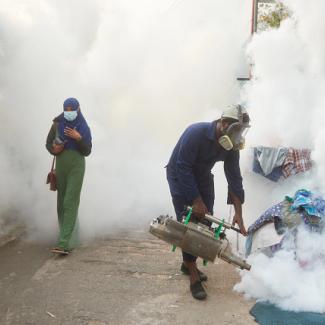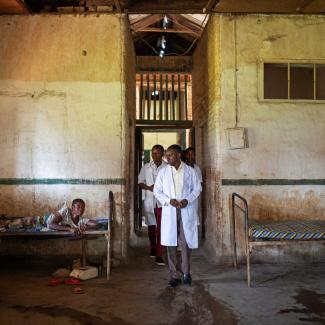The BA.2 variant, a subvariant of omicron, recently led to a surge in COVID cases in Europe, and now it is the dominant variant in the United States. This week also brought news of two new sub-lineages of BA.2—BA.2.12 and BA.2.12.1—in New York.
Once again, we turned to our Institute for Health Metrics and Evaluation (IHME) colleague Ali H. Mokdad, chief strategy officer for population health at the University of Washington in Seattle, and professor of health metrics sciences at IHME, to answer our latest COVID-19 questions.
□ □ □ □ □ □ □ □ □ □ □ □ □ □ □ □
Think Global Health: I saw on your Twitter feed that everyone is asking you about the omicron BA.2 variant, wanting to know how scary it is. How scary is it?
Ali Mokdad: I can't say it's not scary because many people are being infected and dying from it.
Think Global Health: How does it compare to omicron?
Ali Mokdad: Compared to omicron, it's the same in terms of severity. The vaccines are as effective against it as they are against BA.1 and omicron. The only difference is it's more infectious than omicron.
Think Global Health: It seems like many countries that had mandates are now dropping them. Is that a problem with this "stealth" variant spreading?
Ali Mokdad: It's coming at a time when everybody has dropped their mandates, especially in Europe. If you look at Europe, they had strict mandates and one day they decided, let's move on. And, of course, that will lead to a surge. In Europe, immediately after they opened up, people who are susceptible and who started going out, they got it [omicron].

Think Global Health: What's happening with omicron numbers in the United States?
Ali Mokdad: In the past two or three weeks, it has been the same standing. If you look at the data, we didn't see a bump at the national level, though some states will—it will stay for a week or two and come down, though. It will not be high—many people will not notice it.
We've seen a bump in Arizona and Maine a little bit, for four or five days, and then it started coming down. Again, it's due to a combination of BA.2, behaviors, and waning immunity.
Think Global Health: What is your advice at this point on wearing a mask where BA.2 is circulating?
Ali Mokdad: Mask wearing has gone down a lot in the United States, especially after the surge in omicron. And quite honestly, at the national level and at the individual state level, mask mandates are not needed anymore. So I'm supportive of no mask mandate.
Think Global Health: What about masking in crowds?
Ali Mokdad: I personally would wear a mask, a good quality mask, if there's a larger group and if I am indoors. Right now, the university endorses masks in our buildings—masks are recommended, but they are not mandated.
My recommendation is the following—and it’s very hard to explain to the public. Population health is about the population. The advice for everybody right now is that mass mandates are not needed. But my advice on the individual level is totally different. If you have a child under the age of five, if you are somebody who's older, if you are somebody who is obese, if you are somebody who has a chronic condition, somebody immunocompromised—you need to wear a mask. And people around you need to wear a mask, and people in your school need to wear a mask, and people in your office need to wear a mask.
So right now, we are at a time in this pandemic when it's like flu season. You need to be careful around the people who could die from flu, and who could have a serious illness from flu. That’s my mom. Before COVID-19, we protected my mom because she has heart failure. So that's advice right now. Mask mandates are not needed. You have to know your own risk, and the risk of the people around you, and protect them.
Think Global Health: What is a recombinant variant and how is that different from a regular variant?
Ali Mokdad: It's a variant coming back again on top of another one—with two characteristics from both of them. People are concerned and we need to be very careful. COVID-19 is not done with us. We know that the virus will keep mutating.
We need to put it in perspective. In the 1918 flu pandemic, we had H1N1. And we still have H1N1, but nobody talks about it because it rarely infects people and it doesn’t kill anyone. COVID-19 will become like this and it will always keep mutating, so we'll have a different COVID every year.
But this one right now, we haven't seen any indication that it is taking off. The big question mark with this BA.2 variant—which we don't have an answer to—is, if 60 percent or more of the population has been infected by omicron BA.1, does it mean that I will not get BA.2? If that's the case, then we're in a very good position.
But if this new variant is going to infect people who have been infected a month or two months ago, then we have to start all over again. And many people who are out and about and not wearing a mask are going to be infected, because they are susceptible. That's the big question mark right now. So far, we have no indication that BA.2 is infecting people who have been infected by BA.1.
Think Global Health: What's the average time frame in which immunity seems to wane?
Ali Mokdad: After three to six months, after that time, we all need a booster, even if we are vaccinated and received a booster. To protect against hospitalization and death. Omicron and BA.1 and BA.2 have a shorter incubation period. It doesn't take a week or 14 days to appear—it takes a week to show up and to see a surge in the population.
I would recommend to the people I love, and everybody, to get the vaccine, especially if you received your last dose four or five months ago.



